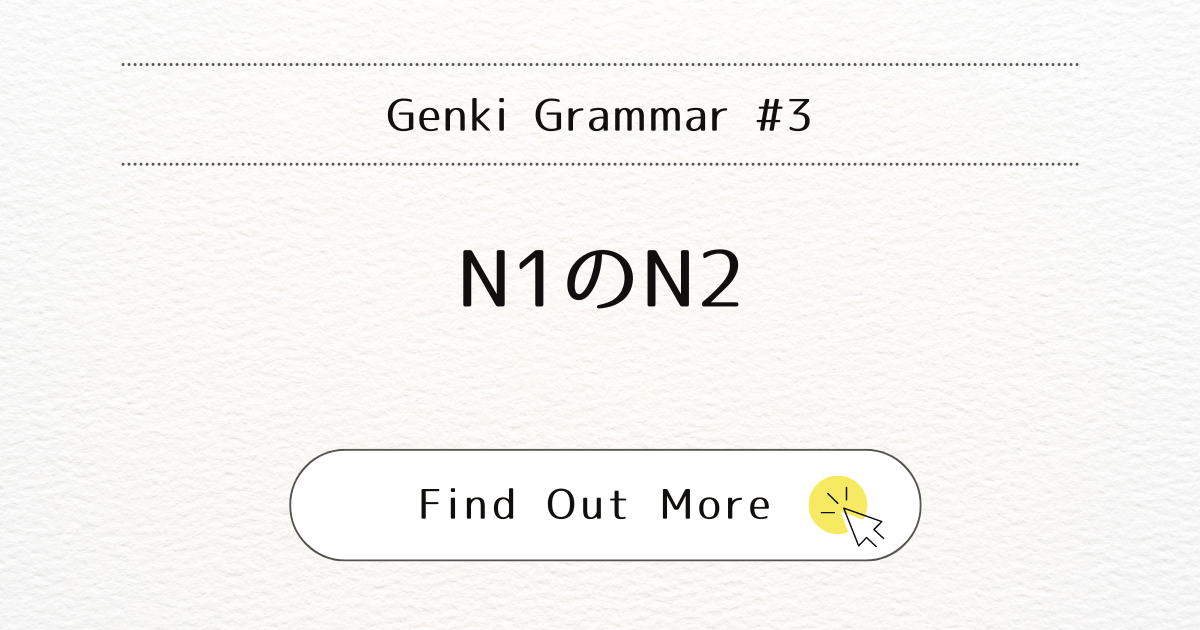
Introduction
If you’re learning Japanese, you’ll soon find out how important the particle “の” (no) is. It’s used to connect two nouns (N1 and N2). In this post, we’ll explain the “N1のN2” structure, which helps you describe things more specifically.
What It Means
N1 in ‘N1のN2’ describes or specifies N2.
The particle ‘の’ (no) connects two nouns, N1 and N2. N2 is the main idea, and N1 adds details about it. For example, ‘ABCだいがくの がくせい’ (ABC daigaku no gakusee) means ‘a student of ABC University.’ The main idea is ‘student,’ and ‘ABC University’ provides more specific information about which student.”
When You Use It
You can use the “N1のN2” structure to describe things more clearly. It’s useful for showing ownership or adding details about what kind of thing you’re talking about.
Examples
Here are some examples to show how “の” works:
- マリアさんの でんわばんごう (Maria san no denwa bangou)
Maria’s phone number - だいがくの せんせい (Daigaku no sensei)
A university professor - にほんごの がくせい (Nihongo no gakusee)
A student of the Japanese language
As you see above, a phrase like “N1のN2” acts like one big noun. You can use it wherever you can use a noun. In the following example, “N1のN2” is used as X and Y in the “XはYです” structure:
- マリアさんの おとうさんは こうこうの せんせいです (Maria san no otoosan wa kookoo no sensei desu)
Maria’s father is a high school teacher.
Note
In the “N1のN2” structure, N2 is the main idea. N1 provides extra details about N2. For example, in “マリアさんの でんわばんごう” (Maria san no denwa bangou), the main idea is “でんわばんごう” (phone number). “マリアさん” (Maria) tells us who owns the phone number.
Conclusion
The “N1のN2” structure is an important part of learning Japanese. By using “の” to connect nouns, you can clearly describe who or what you’re talking about.



